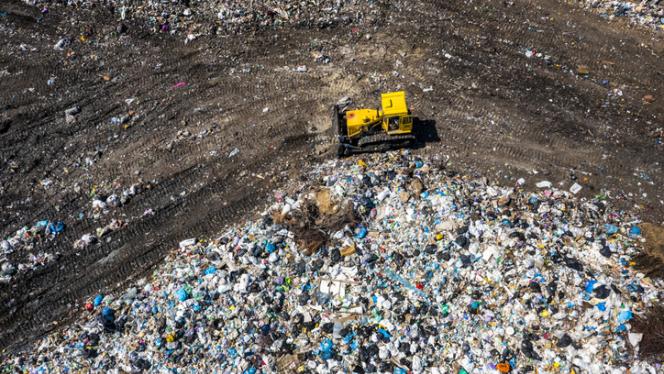Thursday 21 November 2024
Why the single-use plastic bag ban keeps failing

The plastic bag ban, intended to safeguard the environmental health of Somali cities, already appears to be stillborn policy. The government urgently needs to adopt a new approach that collaborates with communities instead of imposing top-down rules.
Earlier this year, Somalia’s ministry of environment and climate change (MoECC) made headlines by declaring a nationwide ban on single-use plastic bags. The decision came in response to growing concerns over the reliance on single-use plastic bags and their growing threat to the country’s environment. In a statement, the ministry announced that from June onwards, the import, export, and production of plastic bags would be illegal, with violators facing consequences.
The announcement received overwhelming support from environmentalists, who had been campaigning for a plastic bag ban for some time and viewed it as a long-overdue measure to address the country’s plastic pollution crisis. “We have a huge problem with plastic bags; they endanger not just us but also the local plants and animals,” one local resident told the media.
The ban was also expected to signal a major shift in the country’s approach to environmental issues, with the government adopting new policies aimed at environmental safety—policies that had long been sidelined despite the environmental crisis the country continues to face.
However, just two months after the declared deadline, the ministry quietly amended the timeline, extending the enforcement date by a further three months. During a public address, the climate minister disclosed that businesses had pleaded for more time to adjust, citing difficulties in transitioning away from plastic products. In response, the ministry confirmed that it would grant a three-month extension, hoping to provide businesses with the necessary time to comply with the new regulations.
Over the past four weeks, the ministry has conducted wide-ranging campaigns across the capital city, accompanied by a media campaign.
Now, at the time of writing, there has been no sign of the ban’s enforcement. The ministry has yet to announce a new deadline, and no legal action has been taken thus far. Despite the extended deadlines, there is still no clear indication of when the ban will come into effect. This raises questions: why has this critical decision not been implemented despite overwhelming support? The repeated delays also prompt questions as to why Somalia is struggling to fully ban single-use plastic bags, while the environmental issues that led to the ban in the first place continue to worsen.
Similar decisions have been made by some federal member states. More than a decade ago, Puntland banned single-use plastic products, but the ban proved ineffective. In 2018, al-Shabaab also announced its own bid to stop plastic bags as well, dubbed “eco-jihadism” by the Voice of America (VOA) outlet.
The problem of plastic waste in Somalia is as much a concern as other issues relating to security, health, and social well-being. Although there is limited research on the amount of plastic produced, imported, and distributed in the country, it has been increasing considerably.
This is evident in the widespread presence of plastic waste on streets, in residential neighbourhoods, and in public spaces across major cities. Research conducted by Mogadishu University found that nearly 90% of the waste on Lido Beach consists of plastic products.
Jazeera beach is another prominent dumping site. Mohamed Yahye, a Mogadishu-based journalist, told VOA that he’d witnessed people dumping everything from trash to sewage on the beach and into the sea. “It deforms the appearance of the cities” he said, adding: “When you fly on a plane over Somali towns, you see trees being covered by plastic bags.”
According to the World Bank, Somalia produces more than 1,500 tons of waste per day. This figure is an estimate, and the actual amount of waste generated could be much higher. Despite this substantial waste production, there is no formal waste collection system in place in cities and neighbourhoods. Though metropolitan areas have under-resourced private companies that collect waste, their disposal methods remain questionable. For instance, waste collected in cities is often dumped on open land a few kilometres away from urban areas, and sometimes even in residential neighbourhoods. In other cases, volunteers have had to take up the mantle and clean the beaches themselves.
What is particularly concerning is that a large portion of this unmanaged waste consists of single-use plastic products.
There is, although rarely acknowledged, a conventional understanding among Somali policymakers that often relegates environmental concerns to the background as an inconvenient challenge. The country is grappling with multiple issues, including the fight against terrorism, ongoing conflicts, and a political crisis which led to chronic government malfunction. The prevailing view among policymakers is that these challenges are far more pressing than environmental issues. The consequence of this outlook is an institutionalised disregard for the safety of the environment.
There are also other reasons why there has been a lack of action on environmental issues including the institutional (in)capacity of the federal government and whether it has the ability to exercise its legislative power. In many cases, federal laws often fail to take effect in the states, either due to disputes over federal jurisdiction or simply a lack of capacity on the local or regional level to see policy through.
The climate ministry is relatively new, having been established just three years ago. Although it has made progress in a short time, including the introduction of new environmental laws, chiefly the Environmental Management Bill, its budget is limited, and its reach across the country is minimal. Moreover, each federal member state has its own climate ministry, without a clearly defined ministerial portfolio, often leading to overlapping responsibilities and conflicts over jurisdiction. On several occasions, federal member states have halted cooperation with the federal ministry of environment.
Another reason why critical environmental legislation is failing is the ministry’s limited authority to enforce its regulatory standards on the private sector. The influence of private businesses is notably significant and often, unfortunately, surpasses the authority of government bodies–a consequence of Somalia’s anarcho-capitalist economic model. Despite the ministry’s efforts and consultations with the private sector, it faces a challenging reality: its legislative authority struggles to compel private companies to adhere to regulatory laws. This becomes particularly problematic when the ministry attempts to implement decisions that conflict with the interests of these businesses. In this case, the ubiquitous presence of plastic bags is partly due to the disregard of proposed laws by private businesses.
Compounding these challenges are three interrelated issues: poverty, inequality, and the lack of environmentally friendly alternatives. Since the decision to phase out plastic bags was introduced and the deadline set, there has been little to no effort to introduce or promote viable alternatives on a large scale that could replace plastics in everyday use. Even the concept of a bag-for-life hasn’t seen much take up.
This oversight has created a significant gap, making it difficult for both the government and the public to move away from their entrenched reliance on plastic bags. As a result, the public has yet to embrace the ban, partly because, as many locals told me, they perceive it as an “unworkable plan,” and partly due to the absence of “accessible and affordable” substitutes.
The sentiment shared by local people and policymakers regarding the broader environmental discourse in Somalia centres on the moral dilemma of poverty and economic inequality, which, to some extent, drive people to adopt unsustainable environmental practices. The vast majority of communities live on less than two dollars per day. Take, for example, the charcoal ban introduced almost 15 years ago. After nearly a decade and a half, the ban is still failing to have an impact because large communities, particularly low-income groups, depend on charcoal for household use, and this dependency has been exploited by private companies. Similarly, many low-income communities have adopted single-use plastic bags as an economically convenient option. Alternatives, such as paper and reusable bags, are not widely, easily, or affordably available compared to single-use plastics. Consequently, people opt for plastic bags.
“What other options do we have?” one local woman who runs a small business told me. “We wish to stop using them [plastic bags], but we don’t have any alternatives.”
Plastic products pose a global environmental problem. More than 460 million metric tonnes of plastic are produced annually, with around 20 million metric tonnes of plastic waste entering the environment each year. This figure is projected to rise significantly by 2040. It is a tremendous challenge that Somalia shares with the rest of the world, but it is not beyond our ability to contain or reduce its pervasive impact on our cities, streets, and neighbourhoods.
Our environment and the safety of our communities are at risk. Somalia has reached a point where it can no longer ignore the issue, which endangers the safety of its neighbourhoods. To address this urgent issue, Somalia needs not only strong policies but, more importantly, a practical approach.
For a successful transition away from single-use plastic products, it is crucial to provide our poverty-stricken communities with practical alternatives that are both accessible and economically viable. We cannot expect communities that are already struggling with daily hardships to adopt sustainable bags that are scarcely available. In addition, a serious and aggressive public awareness campaign must be launched to educate our communities, particularly urban residents, on the importance of this transition and how they can contribute to it.
Without implementing these two critical components—affordable, readily available alternative products and public education—the government's efforts to reduce plastic usage are likely to fall short and may even be disregarded by the very people they aim to protect.









